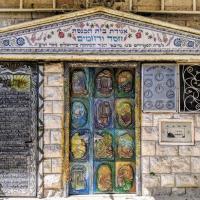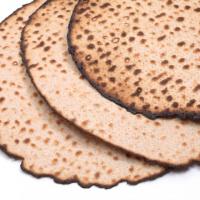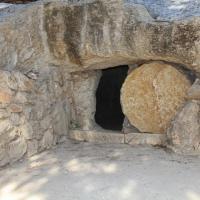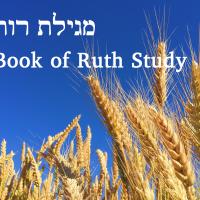Beth Immanuel is a friendly and welcoming community. Click here to learn what to expect when you visit.
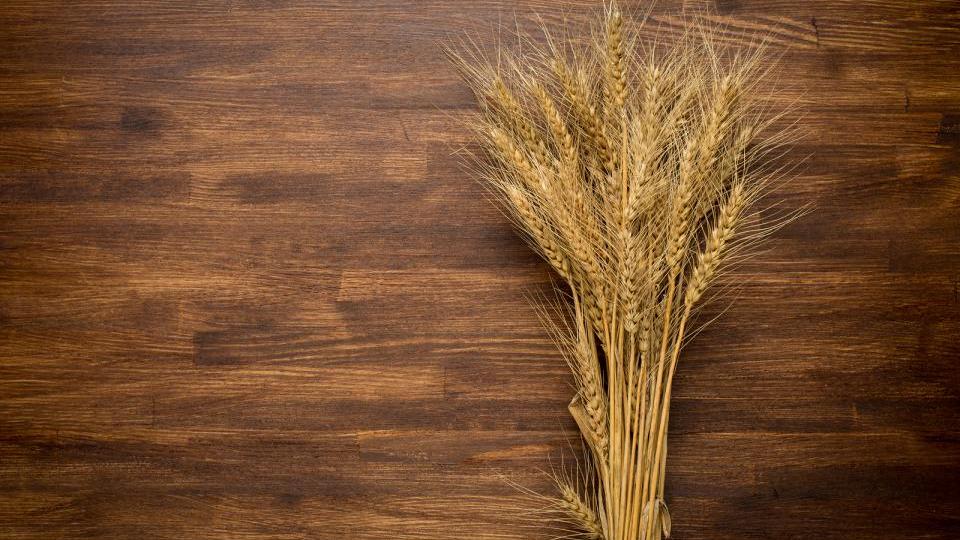
Counting the Omer
The command to bring the first sheaf of the harvest to the Temple is of great significance to the disciples of Yeshua. It is an obscure appointment on the Biblical calendar, sometimes called the First Fruits of the Barley Harvest, but better known simply by its Biblical name, “The Omer.” The Omer is a minor festival with major Messianic implications.
The Omer and the Messiah
On the same day that Caiaphas and his associates tried the Master, three apostles from the Sanhedrin went out to a barley field not far from Jerusalem. On the same day that the Romans bound and crucified the Master, the apostles from the Sanhedrin bound up the standing barley into bundles while it was still attached to the ground so that it would be easier to reap.
Saturday night, they returned to the barley field after the conclusion of the first day of Passover. Crowds from the local villages had gathered to witness the ceremony. Brandishing sickles, the three apostles of the Sanhedrin addressed the crowd, asking, “Has the sun set?” The people replied, “Yes!” They repeated the question two more times, and they received a total of three affirmations from the villagers. Then they asked three times, “Shall we cut with this sickle?” and the crowd responded with three enthusiastic affirmations. Three times the apostles from the Sanhedrin asked, “Shall we place the grain in this basket?” Each of the reapers asked, “Shall I begin to cut now?” Each time, the crowd responded enthusiastically, “Yes!” In this manner, the new harvest began.
The reapers collected three seahs of barley in their baskets and carried it back to Jerusalem that same night. The baskets contained more than enough grain to constitute a full sheaf’s worth (an omer, עמר), enough to fulfill the Torah’s mandate:
You shall bring in the omer of the first fruits of your harvest to the priest. He shall wave the omer before the LORD for you to be accepted; on the day after the sabbath the priest shall wave it. (Leviticus 23:10–11)
The Torah prohibited using or eating any produce from the new year’s cereal crops until the priesthood offered up to the LORD the first of the new grain. The barley crop ripens first in Israel, so the priesthood always offered an omer of barley. The commandment of the barley omer reminded Israel that the land and its produce belong first to God. Until the people harvested and offered the first fruits of the barley in the Temple, the rest of the crops were not considered kosher.
That same night, the priests in the Temple threshed, roasted, and ground the barley into flour. All night they prepared it. The same night that our Master left the tomb, the priests refined the freshly milled flour by sifting it through thirteen sieves.
Sunday morning, while the women discovered the empty tomb, the high priest was busy mixing the barley flour with oil and frankincense to prepare it as a bread offering. The priests mixed the flour into dough with olive oil and incense. Caiaphas took the batch of dough in hand and waved it before the LORD as a wave offering. Then he touched the barley flour to corner of the altar.
After the morning sacrifice and the additional Passover sacrifices (described in Numbers 28:24), Caiaphas offered a portion of grain offering on the altar as a memorial portion. The priests baked the remainder of the dough into loaves of unleavened barley bread to be shared among the priesthood. Caiaphas concluded the ceremony by sacrificing a single male lamb as a burnt offering to accompany the new grain. That day began the fifty-day count to the festival of Shavuot (Pentecost).
The Pharisees and the Sadducees disagreed about the correct day for the barley ritual. The Pharisees maintained that “the day after the Sabbath” (Leviticus 23:11) referred to Nisan 16, the day following the Yom Tov of the festival of Passover. The Pharisees explained that the Torah referred to the Yom Tov as “the sabbath” because it was a special festival day with Sabbath work-restrictions.
The Sadducees maintained that “the day after the Sabbath” referred to the day after the first Saturday (weekly Sabbath) that fell during the week of Passover. In their opinion, the day for offering the barley sheaf always fell on a Sunday.
The Pharisees had the upper hand because they had the popular support of the people. In the days of the apostles, “the day after the Sabbath” meant Nisan 16. Rabbinic literature indicates that, during the days of the apostles, the Jewish people followed the Pharisaic interpretation of Leviticus 23:11, interpreting “the day after the Sabbath” as “the day after Yom Tov.” Evidence from Josephus, Philo, and the Septuagint confirms this.
On the second day of unleavened bread, which is the sixteenth day of the month [Nisan], they first partake of the fruits of the earth, for before that day they do not touch them … They also at this participation of the first-fruits of the earth, sacrifice a lamb as a burnt offering to God. (Josephus, Antiquities 3:250–251/x.5)
There is also a festival on the day of the Passover feast, which succeeds the first day, and this is named the sheaf [omer], from what takes place on it; for the sheaf is brought to the altar as a first fruit … (Philo, Special Laws 2:162)
And he shall lift up the sheaf before the Lord, to be accepted for you. On the day after the first day the priest shall lift it up. (Leviticus 23:11, LXX)
In that particular year, both opinions coincided. Nisan 16 (the correct date according to Pharisaic opinion) fell on a Sunday (the correct weekday according to Sadducean opinion). By divine design, the ritual of offering the first fruit of the barley omer in the Temple coincided with the resurrection of the Messiah. Paul invoked the symbolism when he wrote, “Messiah has been raised from the dead, the first fruits of those who are asleep” (1 Corinthians 15:20). The day of His resurrection began the fifty-day count to Pentecost.
Counting the Omer--A Subject of Dispute
The Harvest of the Barley Omer occurs on the second day of the seven days of Unleavened Bread. It is a miniature festival within a festival. It is listed in Leviticus 23 along with all the appointed times of God.
Beginning on the day that the first omer of barley was harvested and brought to the Temple, a countdown to the next Biblical Festival began. The Torah commands the Israelites to count off 49 days and then celebrate the festival of Shavuot (Pentecost) on the 50th day. The day the Omer was brought was Day One of what is called Counting the Omer. The next day was Day Two of the Omer count, the next was Day Three and so on.
During the 49 days of the Omer count, the wheat crop in Israel ripens. By the end of the Omer count, the crop is ready for harvest and the First Fruits of the wheat crop can be brought to the Temple for Pentecost.
No Small Consequence
The counting of the days of the Omer is a Biblical commandment incumbent upon every Jew. Traditionally, the period of the Omer count is to be a time of spiritual introspection as the counters prepare themselves for Shavuot. Because it begins during Passover and concludes at Shavuot, the counting of the omer remembers the journey from Egypt to Mount Sinai.
The Messianic implications of the Omer and the subsequent count down are great. According to Matthew 28:1, Yeshua rose “after the Sabbath, as it began to dawn toward the first day of the week,” a Hebraic expression for havdalah hour that ends the Sabbath on Saturday night. We cannot help but notice that the appointed day for harvesting the barley omer coincides with the resurrection of Messiah. In a remarkable display of God’s sovereign planning, the Torah set aside the resurrection as a day of first fruits 1400 years before its occurrence.
Just as the first omer of barley was brought as a first fruits of the whole harvest, so too Messiah’s resurrection was a first fruits of the resurrection of the dead. This is the imagery Paul invokes with the words, “Messiah has been raised from the dead, the first fruits of those who are asleep.” Just as the first fruits of the barley made all the rest of the harvest kosher for harvest, so too the resurrection of Messiah makes the resurrection of the dead possible.
Counting the Days of Messiah
Because of the resurrection and the connection to Pentecost, the counting of the Omer is an important mitzvah for believers.
According to Jewish tradition, the counting is done in the following prescribed manner. After the evening prayers each day, the counter recites a blessing: “Blessed are You, LORD Our God, King of the Universe, Who has sanctified us with his commandments and commanded us to count the Omer.” Then the counter simply states, “Today is X days of the Omer.” The person counting follows his formal declaration of the omer day with a recitation of Psalm 67 and a few short petitions for spiritual cleansing and renewal.
Tradition prescribes the recitation of Psalm 67 because it is composed of exactly 49 Hebrew words which correspond to the 49 days of the omer count. The Psalm is seasonally appropriate because of its harvest motif. It is spiritually appropriate because it speaks clearly of God’s salvation (Yeshua) being made known over all the earth.
The Counting of the Omer creates a count down to Shavuot, the time of giving of the Torah and the time of the giving of the Holy Spirit. As such, it guides us on a spiritual journey of preparation. It is a journey which is begun with Passover, the symbol of our Salvation in Yeshua, and completed at Pentecost, the symbol of our completion through the Spirit. The distance of days between the two events should be a time of spiritual reflection, growth, purification and preparation.
The Master’s resurrection makes the counting of the Omer a season of special significance and joy. For his disciples, it is a time to remember the resurrected Yeshua. All of his post-resurrection appearances fell within the days of the Omer count.
At the end of the first day of the Omer, he rose and appeared to Miriam and to two of our number while they traveled to Emmaus, and also to Peter. On the second day of the Omer he appeared in our midst, among the Twelve. On the ninth day of the Omer, he appeared to us again and Thomas was with us. During the counting, he appeared to 500 of our number and then to James. During the counting, he appeared to seven of our number while they fished on the sea. On the fortieth day of the Omer, he led us out to a hill near Bethany, and we saw him ascend to heaven. Before he ascended, he commanded us not to leave Jerusalem, but to wait there for the promise of the Father.
We waited and counted the days. Forty-one, forty-two, forty-three, forty-four, forty-five, forty-six, forty-seven, forty-eight, forty-nine days of the omer . . . and when the day of Pentecost was fully come we were all together in one place.
Let’s work together this year as we keep the mitzvah of Counting the Omer. Let’s express the resurrected life within us by doing more mitzvahs and spreading more joy.
More Messianic Passover Teachings
Want more about Passover from a Messianic Jewish perspective? Check out our Passover page!

